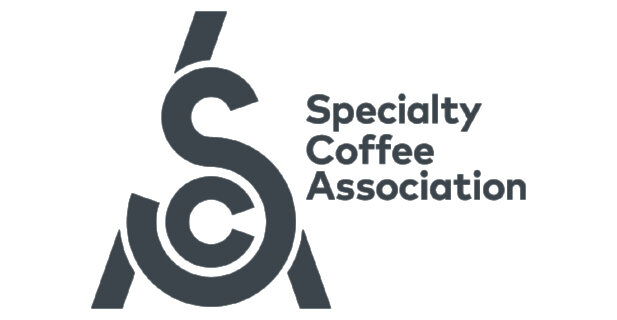Sensory Analysis of Full Immersion Coffee: Q&A with Peter Giuliano and Lead Author Mackenzie Batali
Coffee Science Foundation Executive Director PETER GIULIANO sat down with DR. MACKENZIE BATALI, lead author of a recent milestone study, “Sensory Analysis of Full Immersion Coffee: Cold Brew Is More Floral, and Less Bitter, Sour, and Rubbery Than Hot Brew,” of the Coffee Science Foundation’s project, “Towards a Deeper Understanding of Cold Brew” to learn more about the process and the results of the study.
Cold-brewed coffee has become a mainstay of the specialty coffee experience over the past decade. Along with the popularity of cold brew, however, has come questions: How does cold-brewed coffee differ from hot-brewed coffee? Are the differences chemical, or sensory, or both? And how can our industry develop guidelines and best practices for excellent cold-brewed coffee?
With this in mind, the Coffee Science Foundation alongside SCA, with the generous support of Toddy, LLC, embarked on a journey to understand the science behind cold brew in collaboration with the UC Davis Coffee Center. For nearly three years, the team at UC Davis has been studying everything cold brew, from color to sensory to chemistry to extraction dynamics. And, last month, the project hit a milestone: the publication of an exciting paper entitled, “Sensory Analysis of Full Immersion Coffee: Cold Brew Is More Floral, and Less Bitter, Sour, and Rubbery Than Hot Brew.” This paper, available in full here, is one of the first openly-published studies using sensory descriptive analysis to scientifically quantify the differences between full-immersion hot and cold brewed coffee.
Read along with their conversation below.
Peter Giuliano (PG): This research was part of your postdoctoral studies, which focused on coffee from a sensory and chemical perspective. What made you choose coffee as a field of study?
Dr. Mackenzie Batali (Dr. MB): When I started graduate school, I was interested in quantitative sensory analysis related to product processing and preparation, so when presented with the opportunity to work on the coffee brewing control chart, that was right up my alley. After starting to work on the project and getting to know the coffee industry more, I was committed to the field of coffee because of the creativity and variety you can find in a “simple” one-ingredient product. I liked the idea of using my research and skills to help creative coffee professionals understand and hone the tools they have to make their product.
PG: This research focused on hot-brewed vs. room-temperature and refrigerator-temperature cold brewed coffee. What drew your team to this question?
Dr. MB: There are a lot of myths in the coffee industry around what impacts flavor, and one of the biggest myths right now–as cold brew gains popularity–is that cold brew is sweeter and less acidic. Toddy are cold brew experts, so they wanted to make sure their claims and recipes are backed up by science. We worked with them to design this experiment to more systematically characterize the differences between brew temperatures for cold coffee (i.e., hot-brewed then chilled, or room/fridge-brewed).
PG: Much of this research was done during the height of the COVID-19 pandemic. Normally, you use a sensory panel who work together in a lab. How did you manage to collect sensory data during lockdown?
Dr. MB: Because we were studying cold coffee, it was actually a bit easier to adapt–we would brew cold brew samples ahead of time and deliver them to the panelists’ houses. They were trained to taste together via zoom sessions where sensory references were delivered as well. This did mean the group was tasting in less controlled conditions than a traditional sensory panel, but we were still able to collect adequate data.
PG: So, break it to us: Did you find flavor differences between hot-brewed coffee, and the cold-brewed processes?
Dr. MB: The differences weren’t drastic once controlled for TDS and serving temperature, but we did find that cold brew was slightly less bitter, sour, and rubbery tasting, as well as more floral.
PG: You speculate on how chemistry differences may be the cause of these sensory differences. Can you use chemical analysis to understand these differences?
Dr. MB: Basic chemical analysis (pH and titration) didn’t show a correlation with the decreased sourness, but we can analyze specific acids, as well as bitterants or volatile flavor compounds using mass spectrometry–some of this work has already been done, but we would hope to see more done in the future.
PG: How might information from this research be used in the coffee industry?
Dr. MB: I think the differences aren’t necessarily as drastic as people expect them to be between cold and hot brew. They’re subtle, but ultimately roast and origin are far bigger drivers of sensory quality.
Currently working as a product development food scientist with Compound Foods, Dr. MACKENZIE BATALI holds a PhD in Food Science and Technology from the University of California, Davis with an emphasis on the sensory and chemical analysis of coffee. PETER GIULIANO is the Executive Director of the Coffee Science Foundation and the Chief Research Officer of the Specialty Coffee Association.
“Sensory Analysis of Full Immersion Coffee: Cold Brew Is More Floral, and Less Bitter, Sour, and Rubbery Than Hot Brew,” an open-access article published in Food, was authored by Batali, M. E., Lim, L. X., Liang, J., Yeager, S. E., Thompson, A. N., Han, J., Ristenpart, W. D., & Guinard, J.-X.t.
This project was made possible thanks to generous underwriting from Toddy, LLC.

